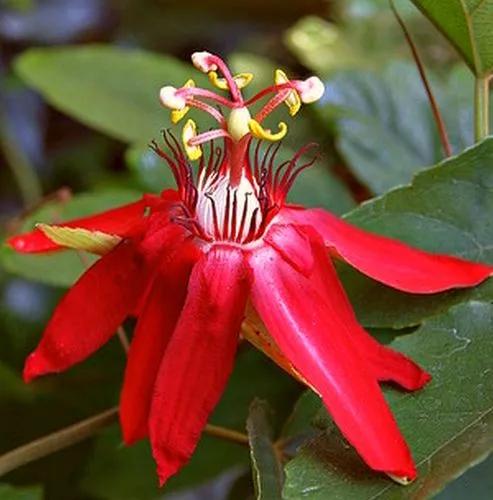Cordyline stricta is commonly known as the Slender Palm Lily or Narrow-leaved Palm Lily. It is currently placed in the family Asparagaceae, though other family affiliations can be found in older references. These other families are Liliaceae, Asteliaceae, Lomandraceae, Laxmanniaceae, Draceaenaceae and Agavaceae.Its native range forms a band from the southern border of Queensland to the Sydney region, but it has become naturalised in Victoria and possibly South Australia. It grows in rainforests and wet sclerophyll forests, with dark, moist gullies being the preferred habitats.Cordyline stricta has narrow, strappy leaves 30-50cm long and 1-2.5cm wide, which tend to be crowded near the top of the stem and leaving scars. There is no distinction between a leaf blade and petiole. When grown in the garden it can reach about 5m high, with highly branched stems that can sprawl or arch. It remains around 2-3m tall when grown in pots, and has a sparser, more compact growth habit.
Narrow-leaf Palm-lily Care
Cordyline Stricta



How to Care for the Plant

Water

It is important to keep the soil continuously moist. Reduce watering during the winter and water your plant whenever the soil surface starts to feel dry.

Pruning

A mature, well-trimmed plant should have stems of various heights, up to 3 to 4 feet, and be clothed in leaves to the soil level. Over time, cordylines tend toward legginess so you will want to trim back individual stems in a staggered pattern.

Fertilizer

These plants can be fed in the spring with slow-release pellets. You can feed the plant weekly during the growing season with a liquid 20-20-20 fertilizer at half-strength. Do not fertilize during the winter.

Sunlight

Cordyline needs bright light, but avoid direct sunlight in unhabituated plants. Also, green-leaved cordyline tends to do best with direct light, while those with other colored leaves may prefer bright indirect or filtered sunlight.

Soil

Cordyline needs a rich, well-drained high-quality potting mix with a pH of 6 to 6.5. If you move the plant outdoors during warmer months, make sure the outdoor soil drains well and any threat of frost has passed. Outdoor plants also need to be well secured; with its large leaves, they can catch in the wind and topple over.

Temperature

Cordyline thrives in temperatures above 62 degrees Fahrenheit and prefers a high humidity environment. Avoid putting the plant near a cold draft like a window, especially if the temperature drops lower than 62 degrees Fahrenheit. These are jungle plants, so if you're experiencing leaf drop, try raising both the temperature and humidity.

Popularity

163 people already have this plant 56 people have added this plant to their wishlists
Discover more plants with the list below
Popular articles






